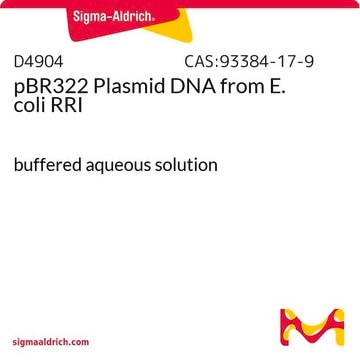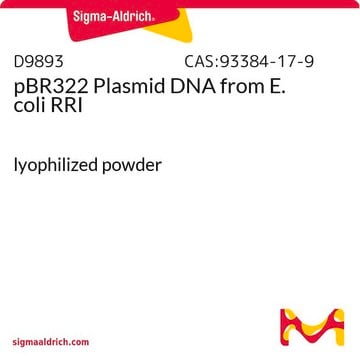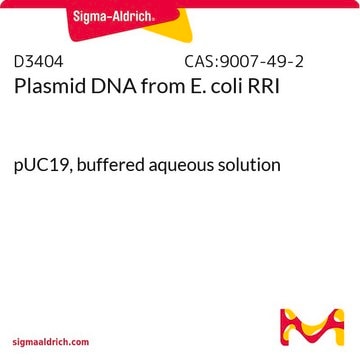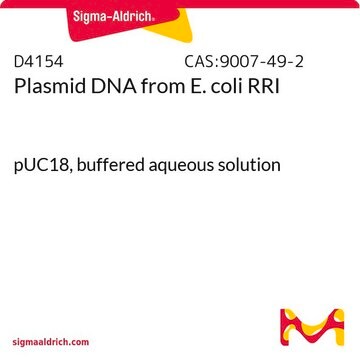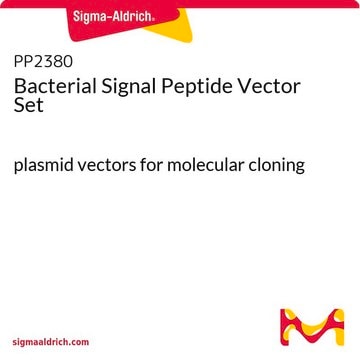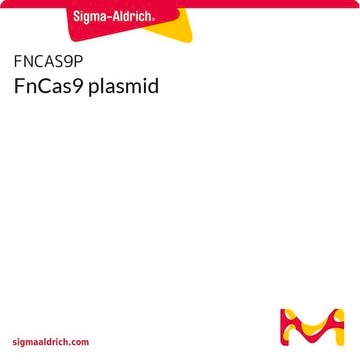OGS589
PBR322 - PBR322 LOW COPY CLONING VECTOR
plasmid vector for molecular cloning
Synonyme(s) :
cloning vector, expression vector, molecular cloning vector, plasmid, plasmid vector, snapfast vector, vector
About This Item
Produits recommandés
Forme
buffered aqueous solution
Poids mol.
size 4361 bp
Sélection de bactéries
ampicillin
Origine de la réplication
BR322 (15 copies)
Clivage des peptides
no cleavage
Gène reporter
none
Conditions d'expédition
ambient
Température de stockage
−20°C
Description générale
Promoter Expression Level:
Application
Séquence
Remarque sur l'analyse
Produit(s) apparenté(s)
Code de la classe de stockage
12 - Non Combustible Liquids
Point d'éclair (°F)
Not applicable
Point d'éclair (°C)
Not applicable
Certificats d'analyse (COA)
Recherchez un Certificats d'analyse (COA) en saisissant le numéro de lot du produit. Les numéros de lot figurent sur l'étiquette du produit après les mots "Lot" ou "Batch".
Déjà en possession de ce produit ?
Retrouvez la documentation relative aux produits que vous avez récemment achetés dans la Bibliothèque de documents.
Notre équipe de scientifiques dispose d'une expérience dans tous les secteurs de la recherche, notamment en sciences de la vie, science des matériaux, synthèse chimique, chromatographie, analyse et dans de nombreux autres domaines..
Contacter notre Service technique